
The 5th International Electronic Conference on Water Sciences
Part of the International Electronic Conference on Water Sciences series
16–30 November 2020
Water, Ecosphere, Ecosystems
- Go to the Sessions
-
- A. Water Interactions with the Different Compartments of the Critical Zone
- B. Water Resources Management and the Ecosphere Resilience and Adaptation
- C. Water, Ecosystem Functioning and Services
- D. Water and the Socio-Ecosystems
- E. Integrated Modelling of the Interactions between Water and the Ecosphere
- F. New sensors, New Methods and Technologies, New Approaches
- G. Poster
- Event Details
Welcome from the Chair
Conference Title: Water and the Ecosphere in the Anthropocene
We are pleased to welcome you to the 5th International Electronic Conference on Water Sciences (ECWS-5), which will be held online, promoted by the open-access journal Water https://www.mdpi.com/journal/water.
In the last few years, four International Electronic Conferences on Water Sciences (ECWS-1, ECWS-2, ECW-3 and ECWS-4) have addressed important water-related aspects. A fifth conference, aiming at deepening the discussion on issues of Water and the Ecosphere in the Anthropocene (WEA), is needed, with attention focused on the water cycle in the ecosphere and its interactions with the different compartments during the Anthropocene. The Earth’s most recent geologic time period is human-influenced, based on overwhelming regional as well as global evidences that atmospheric, pedospheric, geologic, hydrologic, biospheric, and other earth-system compartments and processes are now altered by humans, including a wide diversity of anthropogenic activities and climatic changes. The ecosphere is considered, according to Cole (1958) and Hugget (1999), as a global ecosystem integrating all living organisms and their inorganic environments. During the Anthropocene, the ecosphere can be viewed as a global socio-ecosystem, including the Critical Zone, ecosystems, human societies, and their interactions with the environment. Different aspects of the interactions between water and the ecosphere in the context of global changes will be considered in this conference, including water quantity, quality, biology, ecology, sociology, economy, and law.
The ECWS-5 invites researchers from academia as well as stakeholders, to contribute original results, novel ideas and scientific concepts, and new technologies and experiences to deal with processes within the context of WEA, making reference to the following topics framed in a global changing environment with a special focus on sustainability, resilience, and adaptation:
- Water interactions with the different compartments of the Critical Zone
- Water resources management and ecosphere resilience and adaptation
- Water, ecosystem functioning and services
- Water and socio-ecosystems
- Integrated modelling of the interactions between water and the ecosphere
- New sensors, new methods and technologies, and new approaches
- Poster
Conference Secretariat: Ms. Vanessa Sun <ecws@mdpi.com>
Opening Speech from the Chair
Dr. Jean Luc PROBST
Call for Submissions
The 5th International Electronic Conference on Water Sciences (ECWS-5) will be held from 16 to 30 November 2020 online . This event enables the researchers of research field to present their research and exchange ideas with their colleagues without the need to travel. All proceedings will be published on the conference homepage in open access format.
Through this event, we aim to cover the following topics:
- Water interactions with the different compartments of the Critical Zone
- Water resources management and ecosphere resilience and adaptation
- Water, ecosystem functioning and services
- Water and socio-ecosystems
- Integrated modelling of the interactions between water and the ecosphere
- New sensors, new methods and technologies, and new approaches
- Poster
In Poster session, posters can be presented without an accompanying proceedings paper and will be available online on this website during and after the e-conference. However, they will not be added to the proceedings of the conference.
The conference will be completely free of charge—both to attend and for scholars to upload and present their latest work on the conference platform. Selected papers presented in ECWS-5 will be published in a Special Issue of journal Water undergone a full peer-review (ISSN 2073-4441; Impact Factor: 2.544 (2019) with a 20% discount on the APCs); ECWS-5 offers you the opportunity to participate in this international, scholarly conference without having the concern or expenditure of travel — all you need is your computer and access to the Internet. We would like to invite you to “attend” this conference and present your latest work.
Abstracts (in English) should be submitted by 31 October 2020 online at https://www.sciforum.net/login. For accepted abstracts, the full paper can be submitted by 9 November 2020. The conference itself will be held 16-30 November 2020.
We hope you will be able to join this exciting event and support us in making it a success. ECWS-5 is organized and sponsored by MDPI, a scholarly open access publisher based in Basel, Switzerland.
Paper Submission Guidelines
For information about the submission procedure and preparation of a full presentation, please refer to the "Instructions for Authors".
Conference Chairs

ECOLAB, Centre National de la Recherche Scientifique (CNRS), University of Toulouse, campus ENSAT, Auzeville Tolosane, France
Jean-Luc PROBST is senior scientist in Environmental Biogeochemistry at the French National Center for Scientific Research (CNRS), CNRS Research Director. He got his PhD in 1983 at the University of Toulouse (France) and his Habilitation (Thèse d’état) in 1990 at the University of Strasbourg (France). He was the Director of the Laboratory of Functional Ecology and Environment, a joint research laboratory CNRS- Paul Sabatier University (UPS) – National Polytechnic Institute of Toulouse (Toulouse INP) during the period 2011-2015. He was professor during 4 years (2004-2007) at Toulouse INP and he has supervised 35 PhD and 60 Master Thesis. He has a good expertise on hydrology and biogeochemistry of small catchments and large river basins and he already worked on river systems all around the world with scientists of different countries.
jean-luc.probst@ensat.fr
Conference Committee

Department of Environmental Research and Innovation (ERIN), Luxembourg Institute of Science and Technology, 5, avenue des Hauts-Fourneaux, L-4362 Esch/Alzette, Luxembourg
Laurent J. A. Pfister is head of the research unit ‘Environmental sensing and modelling’ (ENVISION) at the Luxembourg Institute of Science and Technology. He also is Adjunct Professor in environmental sciences at the University of Luxembourg (Faculty of Science, Technology and Medicine) since 2017. He has a Ph.D. in Physical geography – Hydrology from the University of Strasbourg, France. His main research domains include experimental hydrology, tracer hydrology, hydro-climatology. His work is focusing on the holistic understanding – via interdisciplinary approaches – of intrinsically coupled hydrological and human systems in a context of global change and the subsequent non-stationarity of environmental systems. He has coordinated nearly 40 applied and fundamental research projects – several introducing innovative technologies for overcoming limitations in water resources research and management (e.g., cell phone microwave links for measuring rainfall, portable mass spectrometer for high-frequency analysis of O and H isotopes in water, thermal IR imagery for mapping saturated area dynamics, terrestrial diatoms as hydrological tracers). He has co-authored more than 130 scientific manuscripts (H-index = 36) in water resources research, as well as more than 20 books or book chapters. He is currently serving as associate editor for Hydrology and Earth System Sciences, Journal of Hydrology and Hydromechanics and Scientific Reports. Within the European Geosciences Union, he has served as chair of the Catchment Hydrology sub-division, Programme Group Chair and Deputy-president of the Hydrological Sciences division. Since 2016, he is national representative of Luxembourg within the International Association of Hydrological Sciences (IAHS). Over the past 20 years, he has been involved in the organisation of 24 international conferences and workshops in Luxembourg (e.g., EGU Leonardo topical conference, AGU Chapman conference) and Europe (e.g, Euro-Mediterranean Network of Experimental and Representative Basins conference).
experimental hydrology; tracer hydrology; hydro-climatology
laurent.pfister@list.lu

Institute of Political Science and Oeschger Center for Climate Change Research, University of Bern, Bern, Switzerland;
Environmental Social Sciences Department, Eawag, Dübendorf, Switzerland
Karin Ingold has served as Professor at the Institute of Political Science, University of Bern, since August 2011 and is also affiliated with the Oeschger Centre for Climate Change Research (OCCR). She leads the research group of Policy Analysis and Environmental Governance (PEGO) affiliated with the Institute of Political Science at the University of Bern and the Department of Environmental Social Sciences at EAWAG. Karin Ingold is Associate Editor of Continental Europe for the journal Policy & Politics and serves on the editorial board of the Policy Studies Journal, Swiss Political Science Review, European Policy Analysis, Journal of Public Policy, and Connections. In her research, she is interested in the analysis and design of policy processes and instruments. Through her PhD and recent research, she became a scholar of the Advocacy Coalition Framework and other policy process theories. Methodologically, she has mainly honed her skills in the conceptual development and application of social network analysis. Since 2008, she has been a co-organizer of the International Conference on the Application of Social Network Analysis (EUSN), and since 2013, she is in the Scientific Board of the European Conference on Social Network Analysis.
environmental governance; climate change; energy; urban water management
karin.ingold@ipw.unibe.ch

Prof. Dr. John Richardson has >40 years expertise in freshwater science, with over 200 scientific publications mostly in international scientific journals. His research in community and ecosystem ecology has addressed questions around the processes that structure communities, especially around interactions that connect streams and riparian areas. Some key topics include decomposition, population regulation, and interactions between species, and how human activities affect processes in freshwater and riparian ecosystems. He is Director of the Stream and Riparian Research Laboratory at the University of British Columbia and previously served a 5-year term as Head of Department. He has supervised >50 graduate students and >20 post-doctoral fellows in addition to guiding numerous research assistants. He has served on the editorial boards of Canadian Journal of Fisheries and Aquatic Sciences, Freshwater Sciences, and Journal of Applied Ecology. His teaching includes courses in freshwater ecosystems, in which he has taught thousands of undergraduates, as well as courses in urban biodiversity, fluvial ecohydrology, and wildlife biology. He serves on panels for the State of Washington’s Riparian Rules Committee, chairs the South Coast Conservation Program, is on the Committee on the Status of Endangered Wildlife in Canada (COSEWIC) for endangered arthropods, and is a committee member of Aquatic Habitat Canada. A full CV is available on his website.
communities; decomposition; ecology; experiment; lakes; riparian areas; streams; wetlands
john.richardson@ubc.ca

Department of Environmental Studies, SUNY College of Environmental Science and Forestry , State University of New York, 416 Marshall Hall, 1 Forestry Drive, Syracuse, NY 13210, USA
Richard C. Smardon is a SUNY Distinguished Service Professor Emeritus at SUNY/ESF. He has a Ph.D. in Environmental Planning from the University of California, Berkeley, a Master’s in Landscape Architecture, and a Bachelor’s in Environmental Design from the University of Massachusetts, Amherst. He has edited/written seven books, including The Future of Wetlands: Assessing Visual-Cultural Values (1983), Foundations for Visual Project Analysis (1986), The Legal Landscape: Guidelines for Environmental and Aesthetic Protection (1992), and Sustaining the World's Wetlands: Setting Policy and Resolving Conflicts (2009). He is one of five author/editors of the national award-winning book, The Renewable Energy Landscape: Preserving Scenic Values in our Sustainable Future (2016). He published Revitalizing Urban Waterways: Streams of Environmental Justice with two co-authors and Education for Sustainable Human and Environmental Systems: From Theory to Practice with three co-authors in 2018. He wrote the “Social Processes, Urban Ecosystems, and Sustainability” chapter in Understanding Urban Ecology: An Interdisciplinary Approach (2019). He is on several journal editorial boards including Water and Urban Planning. His major areas of expertise include landscape assessment and management, wetland assessment and mitigation, green/blue infrastructure, environmental management/citizen participation, law and aesthetics, ecotourism/heritage resource management, plus energy sustainability planning and implementation. He is Chair of New York State’s Great Lakes Basin Advisory Council.
landscape assessment and management; wetland assessment and mitigation; green/blue infrastructure; environmental management/citizen participation; law and aesthetics; ecotourism/heritage resource management; plus energy sustainability planning and impleme
rsmardon@esf.edu

State Key Laboratory of Information Engineering in Survey, Mapping and Remote Sensing (LIESMARS), Wuhan University, Wuhan, China
Xiaoling Chen completed her PhD degree in geography at Nanjing University, Nanjing, China, in 1997, and was awarded an honorary doctorate from Paul Sabatier University, Toulouse, France, in 2017. She has worked at the State Key Laboratory of Information Engineering in Survey, Mapping and Remote Sensing (LIESMARS), Wuhan University, Wuhan, China, since 1997. From February 2000 to May 2001, and January 2002 to January 2003, she was a senior visiting scholar at the Department of Civil and Structure Engineering, The Hong Kong Polytechnic University. From 2008 to 2011, she was the Director of the Laboratory of Poyang Lake Wetland and Watershed Research, Ministry of Education, China. She was invited to work at the Ecolab at Paul Sabatier University, Toulouse, France, from March 2012 to June 2012. Her main research interests include water color remote sensing for coastal and inland water turbidity and eutrophication, and study on the land–field complex human–land relationship, under the influence of human activities and climate change from satellite observations.
remote sensing of environment; lake-watershed system; eco-environmental monitoring; application of remote sensing and GIS
xiaoling_chen@whu.edu.cn

State Key Laboratory of Information Engineering in Survey, Mapping and Remote Sensing (LIESMARS), Wuhan University, Wuhan, China
Mr. Jianzhong Lu received his doctor degree in geography from Wuhan University, Wuhan China, in 2010. He is now an associate professor at the State Key Laboratory of Information Engineering of Survey Mapping and Remote Sensing at Wuhan University. His research interests are focused on remote sensing and the numerical simulation of environment. The main research direction includes water resources management, hydrology modelling, remote sensing of environment, data assimilation, climate change and environment response, and eco-hydrology. He was funded to work in the Hong Kong Polytech University as an assistant researcher from 2007 and 2011 respectively, and also worked as a visiting scholar at Ecolab, University Paul Sabatier—Toulouse III in France, from November 2014 to November 2015, granted by the China Scholarship Council. His scientific achievements have been operationally applied in the coastal water environment management system of Hong Kong, and the environmental monitoring and protection of Poyang Lake and Erhai Lake. He has been awarded the first prize of the Hubei Development Research Award once, and the second prize of the National Surveying and Mapping Technology Progress Award twice. He is also a member of the National Geographic Condition Monitoring Committee of the Chinese Society of Surveying and Mapping Geographic Information, which is the expert organization and training teacher of the Second National Survey of Pollution Sources in Hubei province. He served as a paper reviewer for more than 20 international journals, and has published more than 80 papers, and authorized 5 national invention patents and 6 computer software copyright registrations.
water resources management; hydrology modelling; remote sensing of environment; data assimilation; climate change; eco-hydrology
lujzhong@whu.edu.cn

IRD Researcher, Geosciences Environment Toulouse laboratory, University Paul Sabatier, Toulouse, France
David Point is Senior Researcher at Geosciences Environment Toulouse laboratory, located at the University Paul Sabatier, in Toulouse, France, since 2008. He holds a Ph.D. in environmental analytical chemistry (University of Pau et des Pays de l’Adour, France, 2004). He postdoc in 2005 was undertaken at the National Institute of Standards and Technology (NIST), Charleston, SC, USA. David Point has wide expertise in the mercury and trace element biogeochemistry of aquatic ecosystems. His activities include the use of different analytical techniques to document trace elements and mercury cycling, in particular, stable isotope measurements (MCIPCMS) and speciation techniques (GCIMS) with particular emphasis on the use of in situ passive sensors (DGTs). He has an H-index of 19, having published more than 45 articles in high impact factor journals (ORCID: 0000-0002-5218-7781).
mercury; trace elements; speciation; stable isotopes; in situ sensors; biogeochemistry
david.point@ird.fr
Sessions
B. Water Resources Management and the Ecosphere Resilience and Adaptation
C. Water, Ecosystem Functioning and Services
D. Water and the Socio-Ecosystems
E. Integrated Modelling of the Interactions between Water and the Ecosphere
F. New sensors, New Methods and Technologies, New Approaches
G. Poster
Instructions for Authors
Submission
Submissions should be done by the authors online by registering with www.sciforum.net, and using the "Submit New Abstract" function once logged into system.
- Scholars interested in participating with the conference can submit their abstract (about 200-300 words covering the areas of manuscripts for the proceedings issue) online on this website until 31 October 2020.
- The Conference Committee will pre-evaluate, based on the submitted abstract, whether a contribution from the authors of the abstract will be welcome for the 5th International Electronic Conference on Water Science. All authors will be notified by 2 November 2020 about the acceptance of their abstract.
- If the abstract is accepted for this conference, the author is asked to submit his/her manuscript, optionally along with a PowerPoint and/or video presentation of his/her paper (only PDF), until the submission deadline of 9 November 2020.
- The manuscripts and presentations will be available on https://sciforum.net/conference/ECWS-5 for discussion and rating during the time of the conference 16-30 November 2020.
- Accepted papers will be published in the journal Environmental Sciences Proceedings. After the conference, the Conference Committee will select papers that may be included for publication in the Special Issue of ECWS-5 by the Open Access Journals Water with a 20% discount off the Article Processing Charge (APC).
Manuscripts for the proceedings issue must have the following organization:
- Title
- Full author names
- Affiliations (including full postal address) and authors' e-mail addresses
- Abstract
- Keywords
- Introduction
- Methods
- Results and Discussion
- Conclusions
- (Acknowledgements)
- References
Manuscripts should be prepared in MS Word or any other word processor and should be converted to the PDF format before submission. The publication format will be PDF. The manuscript should count at least 3 pages (incl. figures, tables and references). There is no page limit on the length, although authors are asked to keep their papers as concise as possible.
Authors are encouraged to prepare a presentation in PowerPoint or similar software, to be displayed online along with the Manuscript. Slides, if available, will be displayed directly in the website using Sciforum.net's proprietary slides viewer. Slides can be prepared in exactly the same way as for any traditional conference where research results can be presented. Slides should be converted to the PDF format before submission so that our process can easily and automatically convert them for online displaying.
Besides their active participation within the forum, authors are also encouraged to submit video presentations. If you are interested in submitting, please contact the conference organizer at ecws@mdpi.com to get to know more about the procedure. This is an unique way of presenting your paper and discuss it with peers from all over the world. Make a difference and join us for this project!
Submission: Manuscripts should be submitted online at www.sciforum.net/login by registering and logging in to this website.
Accepted File Formats
- MS Word: Manuscript prepared in MS Word must be converted into a single file before submission. When preparing manuscripts in MS Word, the Electronic Conference on Materials Science Microsoft Word template file (see download below) must be used. Please do not insert any graphics (schemes, figures, etc.) into a movable frame which can superimpose the text and make the layout very difficult.
- Electronic Conference on Water Science MS Word Template File
- References: References must be numbered in order of appearance in the text (including tables and legends) and listed individually at the end of the manuscript. We recommend preparing the references with a bibliography software package, such as EndNote, ReferenceManager or Zotero to avoid typing mistakes and duplicated references. Citations and References in Supplementary files are permitted provided that they also appear in the main text and in the reference list. In the text, reference numbers should be placed in square brackets [ ], and placed before the punctuation; for example [1], [1–3] or [1,3]. For embedded citations in the text with pagination, use both parentheses and brackets to indicate the reference number and page numbers; for example [5] (p. 10). or [6] (pp. 101–105). The Reference list should include the full title as recommended by the ACS style guide. The style file for endnote, MDPI.ens, can be found at https://endnote.com/downloads/style/mdpi
- Author List and Affiliations: Authors' full first and last names must be provided. The initials of any middle names can be added. The PubMed/MEDLINE standard format is used for affiliations: complete address information including city, zip code, state/province, country, and all email addresses. At least one author should be designated as corresponding author, and his or her email address and other details should be included at the end of the affiliation section. Please read the criteria to qualify for authorship.
- Figures, Schemes and Tables: All figure files should be separately uploaded during submission. Figures and schemes must be provided at a sufficiently high resolution (minimum 1000 pixels width/height, or a resolution of 300 dpi or higher). All Figure file formats are accepted. However, TIFF, JPEG, EPS and PDF files are preferred. Materials can publish multimedia files in articles or as supplementary materials. Please get in touch with the Editorial office for further information. All Figures, Schemes and Tables should also be inserted into the main text close to their first citation and must be numbered following their number of appearance (Figure 1, Scheme I, Figure 2, Scheme II, Table 1, etc.). All Figures, Schemes and Tables should have a short explanatory title and a caption. All table columns should have an explanatory heading. To facilitate the copy-editing of larger tables, smaller fonts may be used, but in no less than 8 pt. in size. Authors should use the Table option of Microsoft Word to create tables. For multi-panel figures, the file must contain all data in one file. For tips on creating multi-panel figures, please read the helpful advice provided by L2 Molecule. Authors are encouraged to prepare figures and schemes in color (RGB at 8-bit per channel). Full color graphics will be published free of charge.
For further enquiries please contact us at ecws@mdpi.com.
Authors wishing to publish their papers are asked to abide to the following rules:
- Any facts that might be perceived as a possible conflict of interest of the author(s) must be disclosed in the paper prior to submission.
- Authors should accurately present their research findings and include an objective discussion of the significance of their findings.
- Data and methods used in the research need to be presented in sufficient detail in the paper, so that other researchers can replicate the work.
- Raw data should preferably be publicly deposited by the authors before submission of their manuscript. Authors need to at least have the raw data readily available for presentation to the referees and the editors of the journal, if requested. Authors need to ensure appropriate measures are taken so that raw data is retained in full for a reasonable time after publication.
- Simultaneous submission of manuscripts to more than one journal is not tolerated.
- Republishing content that is not novel is not tolerated (for example, an English translation of a paper that is already published in another language will not be accepted).
- If errors and inaccuracies are found by the authors after publication of their paper, they need to be promptly communicated to the editors of this journal so that appropriate actions can be taken. Please refer to our policy regarding publication of publishing addenda and corrections.
- Your manuscript should not contain any information that has already been published. If you include already published figures or images, please obtain the necessary permission from the copyright holder to publish under the CC-BY license.
- Plagiarism, data fabrication and image manipulation are not tolerated.
MDPI AG, the publisher of the Sciforum.net platform, is an open access publisher. We believe that authors should retain the copyright to their scholarly works. Hence, by submitting a Communication paper to this conference, you retain the copyright of your paper, but you grant MDPI AG the non-exclusive right to publish this paper online on the Sciforum.net platform. This means you can easily submit your paper to any scientific journal at a later stage and transfer the copyright to its publisher (if required by that publisher).
List of accepted submissions (49)
| Id | Title | Authors | Presentation Video | Poster PDF | |||||||||||||||||||||||||||||||||||||
|---|---|---|---|---|---|---|---|---|---|---|---|---|---|---|---|---|---|---|---|---|---|---|---|---|---|---|---|---|---|---|---|---|---|---|---|---|---|---|---|---|---|
| sciforum-034775 | Stable water isotopic evidence for the moisture source and composition of surface runoff in Ladakh, upper Indus river basin (UIRB) | , | N/A |
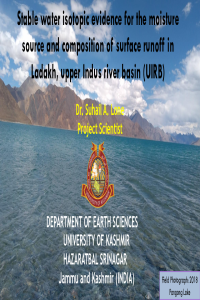
|
Show Abstract |
||||||||||||||||||||||||||||||||||||
|
Stable water isotopic analysis of oxygen and hydrogen (δ18O and δ2H) in stream waters, glacier melt and precipitation were used to investigate hydrological pathways and residence times in snow and glacier dominant mountainous sub-basins of Ladakh (UIRB). A significant spatial and temporal variation in precipitation, stream water and glacier melt samples of Ladakh (UIRB) was observed. The δ18O and δ2H values of precipitation, stream water and glacier melt varied from −16.8‰ to −11.2‰, ₋16.8‰ to ₋11.2‰ and −15.3 to −11.4‰ for δ18O and −124‰ to −83‰, ₋124‰ to ₋83‰ and −112 to −70‰ for δ2H. The depleted isotopic values observed in January and enriched in July with drop in the month of august is attributed to temporal changes in ambient temperature, precipitation amount and change in source of moisture. The average altitude effect of stream water is much higher than precipitation and glacier melt. Monthly δ18O and δ2H values of glacier melt were enriched May and depleted in September. The Local Meteoric Water Line (LMWL) of stream water in Ladakh (UIRB) including tributaries and nallahs is δ2H = (7.8±0.1) ˟ δ18O+ (15±1.9) with lower slope than GMWL but higher than LMWL of Ladakh (UIRB). The results suggest that the snow and glacier melts dominantly controls the annual stream flow with average snowmelt of (29%), glacier melt (39%) and rainfall (21%) respectively. The estimated MRT varied from 7.2 to 13.8 months, the longest MRT for the Suru and Nubra sub-basin is ascribed to its complex topography (increasing snow lag) and large size than the other sub-basins. The MRT for the Dras sub-basin is shorter (7 months) owing to its simple topography and carbonate terrain, which facilitates the runoff. |
|||||||||||||||||||||||||||||||||||||||||
| sciforum-035922 | Modelling external risk to agricultural development projects using a Reconnaissance drought (RDI) and Standardised Precipitation indices (SPI) | N/A | N/A |
Show Abstract |
|||||||||||||||||||||||||||||||||||||
|
Drought is defined as a recurrent feature of climate that involve deficiency of precipitation over an extended period resulting in water shortages that have adverse effects on economy, environment and humans and their health. The probability of drought impacts varies widely depending upon drought duration, frequency and severity, baseline population vulnerability, existing health and sanitation infrastructure, and available resources with which to mitigate impacts as they occur. This natural climate feature adversely leads to poor crop yields. The current study aims at charactering drought for proactive management and mitigation strategies to be applied. The study used standardised precipitation (SPI) and reconnaissance drought (RDI) indices to model the behaviour of drought in the study area. The key findings revealed the study area under frequent, severe to extreme drought events. The study recommends that water users and all other relevant stakeholders adopt mitigation strategies such as use of water sparingly, use of drought-resistant crop cultivars and others. |
|||||||||||||||||||||||||||||||||||||||||
| sciforum-036609 | Nature-Based Solutions: Construction Method of Major Drainage System in Plain Lake-type Cities | , , | N/A | N/A |
Show Abstract |
||||||||||||||||||||||||||||||||||||
|
As a typical fast-growing plain city with the title of “city of hundreds of lakes”, Wuhan, Hubei Province in China, boasts abundant regulating and storing water space. However, this city has suffered from frequent waterlogging and unbalanced storage due to rapid urbanization. To tackle the issue, this study inspired by the idea of “Nature-Based Solutions” (NBS). Taking the major drainage system of Wuhan as an example, it explored the identification and construction of storage and drainage area as well as the planning strategies in the city scale, based on a sustainable urban stormwater system cycle compatible with artificial deployment and natural stormwater process. The stormwater process is simulated with numerical inverse method. Then the drainage network and the natural force get a balance in the system. The result showed that: 1) With the SCS-CN model and surface equal volume filling method, the spaces storing excess surface runoff were identified under the geography and storm recurrence interval; 2) Combining the data of construction land, actual submergence area, and waterlogging points, the major drainage system with emphasis on the restriction of surface elevation were organized. 3) The “storage and drainage function area of major drainage system” was proposed as a NBS. The hierarchical distribution was adopted for layout optimization of urban land use in Wuhan—include the area of storage and drainage, area of strengthened self-drainage, area of waterlogging reduction, and area of low intensity development. Furthermore, it also offered references to the identification and improvement of waterlogging risk points of public facilities in built area. |
|||||||||||||||||||||||||||||||||||||||||
| sciforum-035262 | Spatio-temporal variability in glacier melt contribution in Bhagirathi river discharge in the headwater region of Himalaya | , , | N/A |

|
Show Abstract |
||||||||||||||||||||||||||||||||||||
|
The Himalayan glaciers are one of the significant sources of Indian river systems. In recent times, a major question is being raised about the melting of glaciers and how it will impact river flows in the downstream regions. The Gangotri glacier has also attracted global attention due to the rapid retreat rate. Because of this, the present study has been carried out on the Gangotri glacier, which is the longest glacier located in the Bhagirathi river basin in north India, to understand the dynamics of the glacier and its melting contribution to the river water. In the present study, we collected water samples from the snow/ice, river, and rainfall for isotopic analysis from 2016 to 2018. We observed seasonality in δ18O and δ2H values of rainfall and river water in the Bhagirathi river basin. The isotopic values of rainfall range from -11.6 ‰ to 2.7 ‰ for δ18O, and from -94.8 ‰ to 38.5 ‰ for δ2H during pre-monsoon (April to June), and from -20.6‰ to -4.2 ‰ for δ18O, and from -155.6‰ to -21.9 ‰ for δ2H during monsoon (July to September) season. The river water ranges from -12.8 ‰ to -10.8 ‰ for δ18O, and from -86.3 ‰ to -72.9 ‰ for δ2H during the pre-monsoon, and from -19.0 ‰ to -12.4 ‰ for δ18O, and from -141.9 ‰ to -86.9 ‰ for δ2H during monsoon season. We used a tracer-based hydrograph separation approach to estimate the relative contribution of various river discharge sources. Our results suggest seasonality in relative contribution. The estimated snowmelt contribution is about ~58%, ice melt is ~36%, and surface runoff is ~6%, due to the variability in local climate and temperature in the Himalayan region. |
|||||||||||||||||||||||||||||||||||||||||
| sciforum-036671 | Investigating the socio-economic impacts of climate-induced drought risks on resettled women farmers in Mashonaland Central Province, Zimbabwe | , , | N/A | N/A |
Show Abstract |
||||||||||||||||||||||||||||||||||||
|
Climate change induced drought has affected the lives of many farmers across the world especially in sub-Saharan Africa where many Farmers rely on rain-fed agriculture. . The aim of this study is to investigate the social and economic impacts of drought on the resettled women farmers, in Zimbabwe, a country that has been devastated by recurrent drought exacerbated by climate change. The women farmers, like their male counterparts were resettled in various settlement schemes, in the post independent Zimbabwe. The resettlement programmes were conducted to address the socio-economic imbalances between the white farmers and the majority black subsistence population. Both male and female were given the opportunity to acquire land; however, for the purpose of this study focus is given to women because of gender inequalities and the historical background of the patriarchal society in Zimbabwe and Africa in general. Women were not allowed to own land, therefore the post-independence resettled women farmers were selected based on their higher levels of vulnerability to climate change-induced drought. The exact numbers of resettled women was not easily available from the provincial department of agriculture, however using the specific their demographic characteristics such as similar type of crops grown, livestock reared and the hectares of their farms including the issue that their agricultural activities are in the same natural farming zone a sample of 267 participants was used. Convergence parallel mixed method design was applied in the study. A multi-sampling technique was used, for purposively selecting three out of seven districts in Mashonaland Central province, namely Bindura, Shamva and Muzarabani. This was followed by stratified random sampling and a simple random sampling which was used for the selection of interview participants. Qualitative data was analysed by extracting themes and quantitative data was analysed using the exploration of demographics using PIVOT tables (MS excel), reliability test analysis (using SPSS V25 IBM) and descriptive statistics per latent variable. The results showed that the nutrition of the women farmers and their families was diminished, some of the children drop out of school because the women farmers were not able to pay school fees. The women farmers were not able to buy inputs for the next farming seasons and were not able to pay back loans. The study recommended that the government and other organisations should offer financial assistance, conduct more drought awareness campaigns, and encourage women farmers to have alternatives sources of livelihood. |
|||||||||||||||||||||||||||||||||||||||||
List of Authors (156)
Event Awards
In order to thank the scientists for their support to this conference and to recognize their outstanding scientific achievements, we launch the Best Paper Award and Participation Award.
The Awards
Number of Awards Available: 5
We set 5 best paper awards. The winners can obtain 500 CHF and 400 voucher.Number of Awards Available: 5
We set 5 participation prizes. The participation prizes is 400 voucher.Terms and Conditions:
Best Paper Award
This year, as a sponsor, Water would like to award the best paper as elected by the members of the scientific committee.
Criteria
1. Full paper must be submitted to ECWS-5.
2. The quality of the paper.
3. The scientific content of the paper
Evaluation
1. Each Evaluation Committee member will give an assessment for each paper in terms of the criteria outlined above.
2. The score for each paper will be ranked, from highest to lowest.
3. If two or more papers get the same score, further evaluation will be carried out.
4. All decisions made by the Evaluation Committee are final.
Conference Schedule
Deadline for Abstract Submission: 31 October 2020
Notification of Acceptance: 2 November 2020
Deadline for Submission of Full Paper/Poster/Power Point: 9 November 2020
Conference Open: 16-30 November 2020
A. Water Interactions with the Different Compartments of the Critical Zone
Section Chair

Prof. Dr. Laurent J. A. Pfister (Department of Environmental Research and Innovation (ERIN), Luxembourg Institute of Science and Technology, 5, avenue des Hauts-Fourneaux, L-4362 Esch/Alzette, Luxembourg)
River basins operate as natural filters by transforming an intermittent delivery of rainfall into stream flow through the landscape. This transformation process is characterized by a baffling diversity of flow paths through time and space, posing manifold challenges to flood and drought forecasting and the assessment of global change impacts on our water resources. Our current understanding of these flow paths stems from decades of research in the thin veneer of soil that mantles the river basin. That is where hydrologists have focused their efforts – searching for filtering mechanisms. Recent work has demonstrated that much of the answer – when looking at issues related to low flows or water quality concerns for example – lies in compartments above (e.g., vegetation) and below (e.g., bedrock) the soil profile.
Progress on river basin evolution and process functioning should eventually come through the integration of competences from different disciplines, including hydrology, climatology, biogeochemistry, soil science, ecology, and other fields. As a contribution to a better organization and harmonization of research efforts across disciplines – geared towards gaining a better understanding of how the hydrological cycle may accelerate or decelerate – we invite contributions focusing on (i) interdisciplinary investigations geared towards a better mechanistic understanding of eco-hydrological responses to global change (with a focus on interactions and feedback mechanisms between CZ compartments), (ii) new monitoring technologies, tracers, and protocols across the CZ compartments, (iii) new conceptual frameworks, or forecasting and prediction models in a wide variety of environmental settings.
Keywords: critical zone; atmosphere-vegetation-soil-bedrock interactions; hydrological cycle; global change; non-stationarity; eco-hydrological functions; water quantity and quality; environmental tracers.
Session Chair
Prof. Dr. Laurent J.A. Pfister, Department of Environmental Research and Innovation (ERIN), Luxembourg Institute of Science and Technology, 5, avenue des Hauts-Fourneaux, L-4362 Esch/Alzette, Luxembourg
B. Water Resources Management and the Ecosphere Resilience and Adaptation
Section Chair
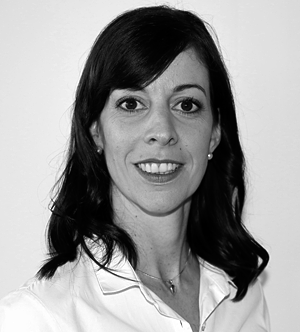
Prof. Dr. Karin Ingold (Institute of Political Science & Oeschger Center for Climate Change Research, University of Bern, Bern, Switzerland; Environmental Social Science Department, Eawag, Dübendorf, Switzerland)
Water is one of the most complex but also vulnerable resources in the world. As a resource, water must fulfill different demands and uses, related to drinking water, irrigation, hydropower, recreation, restoration, and many more. To effectively and efficiently manage the water resources, understanding human-environmental interactions is key. In this session, we welcome submissions that have a social-ecological focus on the water resources and their different uses and that apply novel natural or social scientific methods, as well as inter-and trans-disciplinary approaches.
Keywords: environmental governance; human-environmental interactions; social-ecological systems; resilience; vulnerability; land use and climate change.
Session Chair
Prof. Dr. Karin Ingold, Institute of Political Science & Oeschger Center for Climate Change Research, University of Bern, Bern, Switzerland, Environmental Social Science Department, Eawag, Dübendorf, Switzerland
C. Water, Ecosystem Functioning and Services
Section Chair

Pro. Dr. John S. Richardson (University of British Columbia, Vancouver, Canada)
The past two decades have witnessed a steady progression of ecology in moving beyond structural measures toward integration, with greater consideration of the rates of ecosystem functions and how these are influenced by local and regional environments and, then, how they are further altered by global change. The additive and interactive effects of environmental contexts demonstrate that we can generate general principles about how ecosystems function and what determines the local and regional rates of those processes. Similarly, trait-based approaches have focused on functional aspects of communities and ecosystems to allow for greater generalization across systems. Humans benefit from services derived from nature, and ecosystem functions are the processes that can often lead to provision of services. How do various human activities affect the rates and balances of those functions? What are the implications of changes in ecosystem functions for the supply of benefits to humans from nature (ecosystem services) as a result of global change? This session will discuss ecosystem functions in aquatic systems, including alterations to those functions from global change, and how that influences the supply of benefits to humans.
Keywords: decomposition; ecosystem function; ecosystem services; gas flux; meta-ecosystems; nutrient processing; productivity; traits.
D. Water and the Socio-Ecosystems
Section Chair
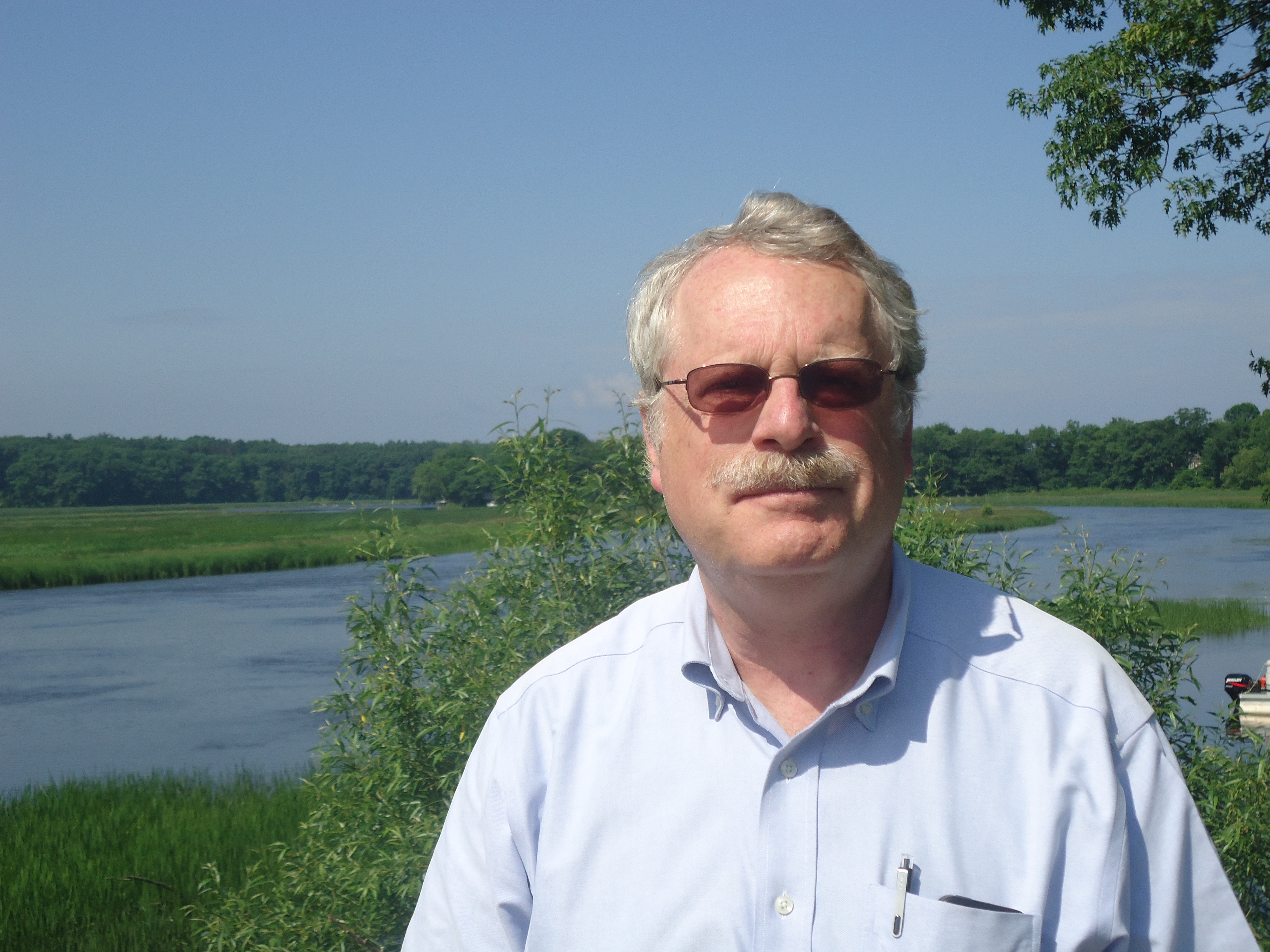
Prof. Dr. Richard C. Smardon (Department of Environmental Studies, SUNY College of Environmental Science and Forestry , State University of New York, 416 Marshall Hall, 1 Forestry Drive, Syracuse, NY 13210, USA
Increasingly, we are moving toward more integrated water-resource management that combines social science with physical science in a systems approach. Instead of expert-driven decision-making, we are utilizing socio-ecological approaches for more inclusion. Therefore, there is a need for socio-ecological research results to help guide water-resource managers and decision-makers as well as multiple stakeholders. This is becoming increasingly apparent as we wrestle with climate change-driven issues of rising coastal water levels, storm-damage resiliency, as well as water-supply and water-pollution treatment. Equally paramount is the issue of addressing equity issues of who benefits or is adversely impacted—so, again, we need socio-ecological approaches so that water-resource stakeholders can “find a voice” in planning and decision-making processes. Additionally, there is the challenge of multiple jurisdictions and layers of government and organizations facing water-resource management issues. How do we develop greater resiliency to better address these challenges? Such are the topics and issues that should be addressed in this section of Water and Socio-Ecosystems with the Fifth International Electronic Conference.
Keywords: socio-ecosystems; systems approach; water-resource management; resiliency; sustainability; risk assessment; environmental justice and equity.
Session Chair
Prof. Dr. Richard C. Smardon, Department of Environmental Studies, SUNY College of Environmental Science and Forestry , State University of New York, 416 Marshall Hall, 1 Forestry Drive, Syracuse, NY 13210, USA
E. Integrated Modelling of the Interactions between Water and the Ecosphere
Section Chair
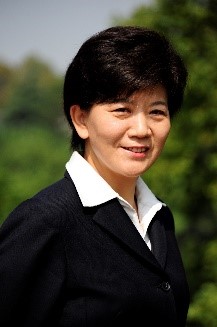
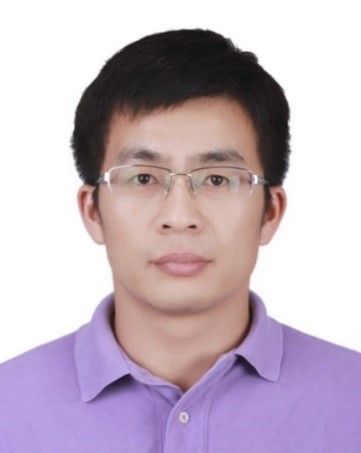
Prof. Dr. Xiaoling Chen (State Key Laboratory of Information Engineering in Survey, Mapping and Remote Sensing (LIESMARS), Wuhan University, Wuhan, China) (left)
Prof. Dr. Jianzhong Lu (State Key Laboratory of Information Engineering in Survey, Mapping and Remote Sensing (LIESMARS), Wuhan University, Wuhan, China) (right)
Ecosphere is the worldwide sum of all ecosystems. It can also be termed ‘the zone of life on Earth’. It is a closed system which is related to the atmosphere, lithosphere and hydrosphere on Earth, where life exists and transforms through the process of life. The interaction between water and the ecosystem community constitutes a dynamic equilibrium system with a certain structure and function through the material circulation and energy flow. Therefore, water is an essential material for the existence and development of the ecosphere. The awareness of how the water cycle and water environment impacts the ecosphere evolution would be helpful to protect our planet. This section provides a web-based platform for scientists and engineers to discuss the integrated modelling of the interactions between water and the ecosphere. This section welcomes submissions of all the sub-disciplines of ecological science, including multi- and interdisciplinary studies related to water and ecology.
Keywords: eco-hydrology; ecosystem modelling; water environment; water resources; climate change.
Session Chairs
Prof. Dr. Xiaoling Chen, State Key Laboratory of Information Engineering in Survey, Mapping and Remote Sensing (LIESMARS), Wuhan University, Wuhan, China
Prof. Dr. Jianzhong Lu, State Key Laboratory of Information Engineering in Survey, Mapping and Remote Sensing (LIESMARS), Wuhan University, Wuhan, China
Show all published submissions (9) Hide published submissions (9)
Submissions
List of Papers (9) Toggle list
F. New sensors, New Methods and Technologies, New Approaches
Section Chair
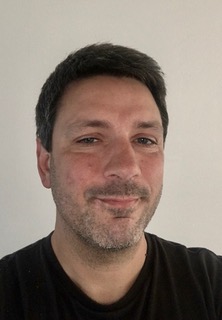
Dr. David Point (IRD Researcher, Geosciences Environment Toulouse laboratory, University Paul Sabatier, Toulouse, France)
Obtaining physical, biological, and chemical data of waters at high spatial and temporal resolution is strategic, both scientifically and socially. Despite great technical progress, the current sensors do not always allow respond favorably under use. It is up to the scientific community to structure itself around common objectives, in particular, by promoting exchange between the developers of technologies and their users. The session entitled “New Sensors, New Methods and Technologies, New Approaches” proposes, through interdisciplinary themes, to accelerate the development of new measurement tools to respond to major issues in the field of water treatments, quality, biogeochemistry, hydrology, and numerous others involving the sensing and characterization of water.
This session welcomes different perspectives within the topic of “New Sensors, New Methods and Technologies, New Approaches”, including engineering, biosensors, chemical and physical sensors, low-cost sensors, in situ sensors, and analytical techniques.
Keywords: sensors; water quality; hydrology; contaminants; nutrients; low-cost techniques; continental and marine waters.
Session Chair
Dr. David Point, IRD Researcher, Geosciences Environment Toulouse laboratory, University Paul Sabatier, Toulouse, France
Show all published submissions (9) Hide published submissions (9)
Submissions
List of Papers (9) Toggle list
G. Poster
Show all published submissions (4) Hide published submissions (4)
Submissions
List of Papers (4) Toggle list




















































